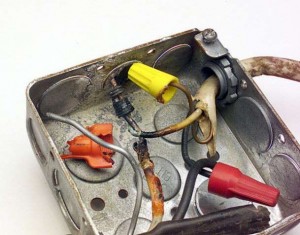 Managing schedules (and time, in general) is a common problem, especially for people in service businesses, like ours. Everything tends to be emergency driven, and we feel pressure from the demands of customers and all the other aspects of running a business. The result of constant fire-fighting is burnout.
Managing schedules (and time, in general) is a common problem, especially for people in service businesses, like ours. Everything tends to be emergency driven, and we feel pressure from the demands of customers and all the other aspects of running a business. The result of constant fire-fighting is burnout.
When we stop learning and creating, we stop growing and life becomes routine, tedious, and boring. We need to deliberately set aside time to do things that that help us grow. Recreation (literally, re-creation) is one form of this. But another equally important form is training and honing our craft, and experiencing those "Ah-hah!" moments when we gain a deeper understanding of the technology we work with every day.
It is vital that we MAKE the time for some big-picture work on our business. This is why annual training events, like ASTI, are so beneficial. Not only are you in a different physical location-- taken out of your regular work space-- but you're reuniting with old friends, meeting new Brethren in the Craft, and learning tons of cool new stuff, both business and technical.
With the Master Samurai Tech Academy, we have an additional reason for attending ASTI: to get the word out on the comprehensive, cost-effective appliance tech training that we offer online! We'll have a booth again and will be running an ASTI special, but also raffling off a free enrollment in our Fundamentals of Appliance Repair training course to anyone who stops by our booth for a visit.
Speaking of the MST Academy, a recent benefit we’ve added for our students is regular Office Hours live technical training webinars. I’ll usually have a special presentation on technical topics of particular interest to appliance techs. Some of the past topics we’ve talked about are:
- Troubleshooting Strategies for Computer-Controlled Appliances
- Digital Communications in Appliance Repair
- Reading Tech Sheets and Schematics
- Diodes and Rectification
- Split-phase motors: theory of operation, types, and applications in appliances
- Voltage and Voltage Drops in Electric Circuits
- Techniques for Measuring Voltage without Getting Head-Faked by Open Neutrals and Ghost Voltages
- Series and Parallel Circuits
- Open Q&A on Student Coursework
I conduct these webinars using Join.me, the best service of its kind out there on the web today. I can pull up schematics and tech sheets for us to talk about and use the whiteboard app to whip out some sketches and talk through circuits.
Another big benefit of doing these weekly, live training webinars has been that we've gotten a real-time look into how, specifically, students are struggling to understand basic electricity, circuits, and schematics, and we’ll add additional videos and instructional material to the courses to address these trip points. This month alone (January 2016) we’ve added three new videos to the Fundamentals of Appliance Repair training course as a direct result of the Office Hours webinars! Here’s a 2-minute excerpt from a video we recently added to the Fundamentals course:
Do you know the answer?
We posted this clip on our Facebook page and got all kinds of different answers which confirms what we already knew: there’s lots of learnin’ to be done out there in the appliance tech community on basic circuits! And if you don’t know basic circuits, there’s just no way you can effectively use schematics to troubleshoot modern appliances.

